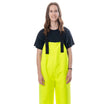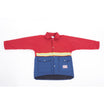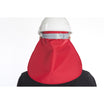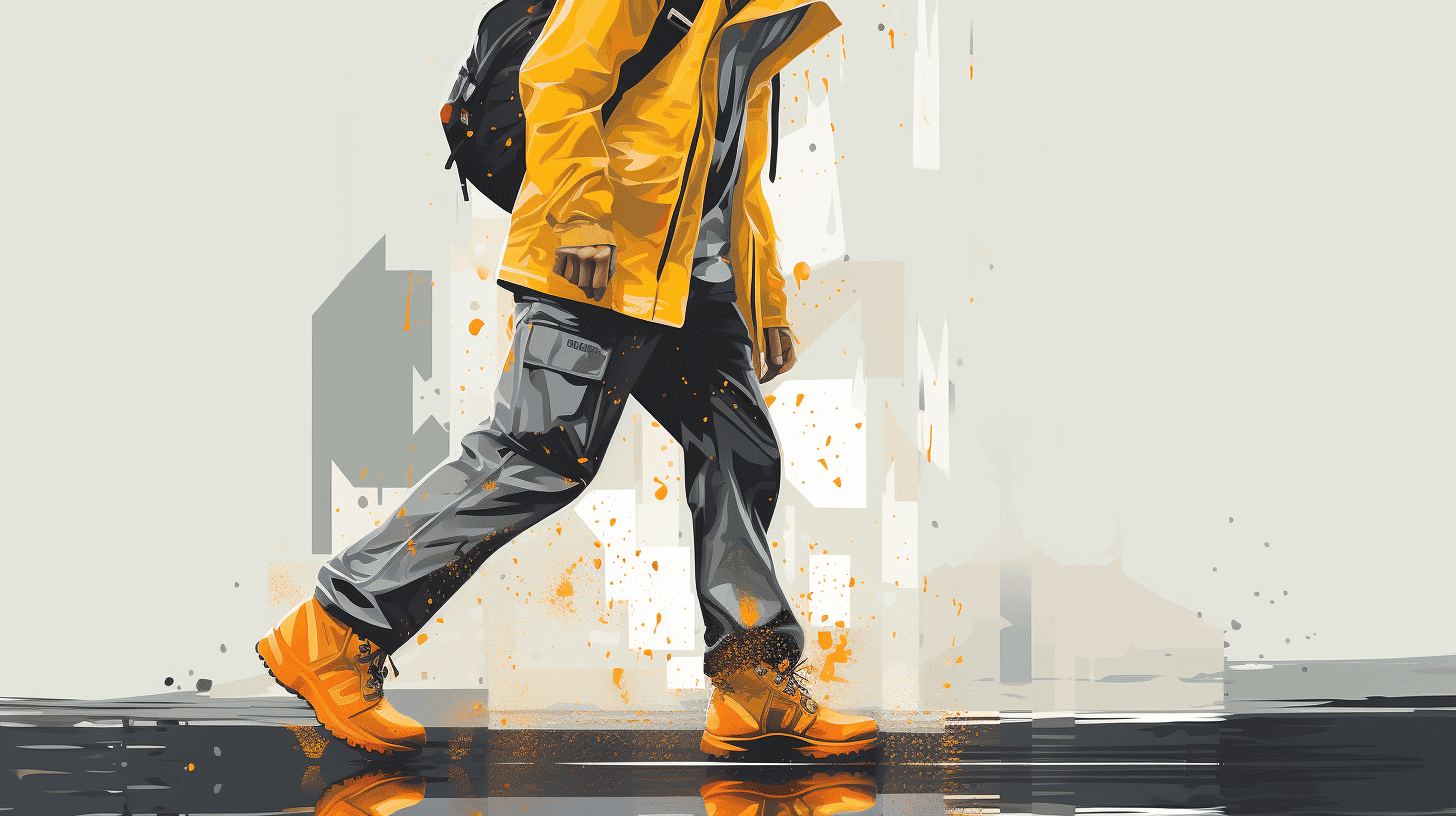When the storm clouds gather and the heavens open up, most people have the luxury of cozying up indoors with a great book or a heart-warming cup of coffee. However, not so for the committed army of construction workers, who against all odds, are geared to brave the worst weather conditions to keep our homes and buildings on schedule. The indispensable ally they rely upon for this rainy day warfare? Robust rain gear.
Far from being just another piece of attire, the right rain gear can be a lifesaver in harsh conditions. In this article, we delve into why rain gear is vital for construction work and how to pick out the most sturdy and reliable selections. Furthermore, we'll demystify the care and maintenance routine for rain gear to prolong its life, effectiveness, and value for money.
Join us on this enlightening journey as we explore the world of robust rain gear for construction work. As a bonus, you may even find yourself more appreciative of the blue-sky days!
Understanding the importance of rain gear in construction
Rain tends to get a lot of bad press. It's the unwelcome guest at picnics, the unsolicited interruption during sunny days, and the qualified nuisance for those who commute. However, its impact becomes severely pronounced when it messes with the realm of construction. Imagine constructing a skyscraper or a bridge, and the heavens decide to open up! It might seem harmless initially, but rain can cause significant complications in construction projects. This is where the utility of rain gear comes into play.
Protection from adverse weather
As the name suggests, rain gear provides a vital layer of protection from the rain. However, its benefits span beyond mere water resistance.
- It safeguards construction workers from cold winds, thus keeping them warm.
- It assists workers in staying dry, helping them concentrate on their work better.
- High-quality rain gear also offers visibility features, ensuring that workers can be easily spotted even in adverse weather conditions.
An investment in solid rain gear is an investment in your workforce's comfort and safety, which shouldn't be underestimated!
Increased productivity
Have you ever tried focusing on a task when you're shivering from cold or soaked to the bone? We bet it wasn't easy. Comfortably dry and warm employees are more likely to focus on the task at hand, ultimately leading to increased productivity. A few benefits include:
- Happier employees who can focus on demanding construction tasks without any distractions.
- Lower chances of delays in project timelines because of weather-related issues.
- It builds a positive company image, demonstrating care for the employees' wellbeing.
A little rain should never be the reason for halting progress!
Health and safety considerations
The benefits of rain gear extend beyond productivity and embrace the realms of health and safety. While we often neglect the impact of rain, it's crucial in the context of construction sites. Here's why:
- Prolonged exposure to rain and cold weathers can lead to health issues like hypothermia and pneumonia. Good rain gear protects workers from such risks.
- Wet surfaces can increase the likelihood of slips and falls, leading to serious injuries. Rain gear, especially footwear, can provide added traction, reducing such risks.
- Especially in the case of electrical work, staying dry is imperative to avoid life-threatening accidents.
Professionally, rain may not have the most stellar reputation. However, with the right rain gear, the tables can quickly turn. By shielding workers from the elements, bolstering productivity, and putting health and safety first, rain gear stands as a silent hero, mitigating much of the rainy day chaos in the construction world. Ignoring its importance might just be a costly oversight. So, next time, don't just watch the weather; be prepared for it!
Key features to avoind in robust rain gear for construction
Whether you're a seasoned construction worker or just dipping your toe into the field, one thing everyone can agree on is the necessity of quality rain gear. Unexpected showers on the job site can not only put a damper on productivity but can also be detrimental to your personal comfort and safety. By evaluating key features, such as water resistance, durability, fit, visibility, and breathability, you can select the right gear to avoid any rain-related issues.
Water resistance
Water resistance is non-negotiable when it comes to selecting the perfect rain gear for construction work. It's not enough to merely repel water. True water resistance involves reliably keeping you dry, regardless of the downpour's intensity. It's essential to select rain gear treated with a durable water repellent (DWR) finish that penetrates the fabric, causing it to bead up and roll off. Avoiding gear that lacks this feature can save you the discomfort and inconvenience linked with moisture seeping into your work clothes.
Durability
Durability in construction rain gear is synonymous with tough, extensively tested materials capable of withstanding punishing weather conditions. Your rain gear's fabric should resist not just precipitation, but also resist tears and punctures synonymous with a construction site. Avoid fabrics that are thin, easily torn, or show signs of wear and tear after brief use. Instead, lean towards gear constructed from thicker, more durable material, such as nylon or polyester.
Comfort and Fit
Remember, the best rain gear won't do you any good if it's too cumbersome or uncomfortable to wear. Avoid gear that is overly stiff, excessively bulky, or doesn't allow a full range of motion. Instead, look for gear designed with articulated joints, adjustable features, and size ranges that include your measurements. An excellent fit will positively influence your ability to perform tasks on the construction site while remaining dry.
Visibility
Low visibility can be a significant concern on a stormy construction site. Lacking high-visibility features in your rain gear can increase the risk of accidents due to poor visibility. Avoid rain gear that is lacking hi-vis features such as reflective tapes, bright colors, or illuminating patches. Instead, opt for gear with ample visibility features designed to make you stand out, even under the greying cloud coverage.
Breathability
Last but certainly not least is breathability. Without this feature, your rain gear may trap sweat and humidity, creating an uncomfortable microclimate within your gear. Rain jackets lacking breathability features can cause excessive sweating, leading to dampness and an uncomfortable working experience. Your best bet is to find gear with ventilated spots, wicking fabrics, or breathable designs that encourage airflow while maintaining water resistance.
By being mindful of these key aspects, you'll be well-positioned to choose high-quality, professional-grade rain gear for construction work, ensuring you stay dry, safe, and comfortable, even during the heaviest rainfall.
Types of rain gear suitable for construction work
Rain or shine, construction work doesn't stop just because the weather decides to be uncooperative. But when Mother Nature unleashes a downpour, having the right rain gear for construction work can make the difference between a miserable day and one that's productive and even comfortable. In this section, we'll discuss some essential pieces of rain gear that can help keep construction workers dry, warm, and safe on the job.
Rain jackets and coats
A good rain jacket or coat serves two main functions: it keeps you dry, and it keeps you visible. Look out for ones that feature:
- Waterproof materials: The most obvious feature to look for in a rain jacket or coat is waterproofing. Quality gear will use materials that resist water penetration, keeping your clothes underneath dry.
- High-visibility colors and reflective strips: Given that low visibility is an inherent risk in rainy weather, choosing rain gear in high-visibility colors, like fluorescent yellow or orange, with reflective strips, can help ensure that you're seen by others on the site.
Weatherproof trousers
Just like rain jackets and coats, weatherproof trousers are an essential part of any construction worker's rain gear. Key features to consider include:
- Waterproof materials: Look for trousers made from materials designed to repel water.
- Durability: Rugged terrain and demanding jobs require trousers that can resist wear and tear. Reinforced seams and robust fabrics can provide the durability needed.
Waterproof boots
Your feet are just as important to keep dry as the rest of your body. Good waterproof construction boots should incorporate:
- Full-seam sealing: This process ensures that every potential entry point for water is sealed off, keeping your feet dry in the wettest conditions.
- Non-slip soles: In rainy weather, surfaces can become slick and hard to navigate. Boots with non-slip soles can help prevent slips and falls.
Hard hat liners and covers
Last but not least, don't forget about your head. Hard hat liners and covers can help to keep your head dry and warm. Highlights include:
- Insulation: For chilly rainy days, an insulated hard hat liner can add a layer of warmth.
- Water resistance: A water-resistant cover can prevent rain from soaking into your hard hat, so your head stays dry.
At the end of the day, the best rain gear is the gear that keeps you safe, comfortable, and able to focus on the task at hand, regardless of what the weather has in store. With these key pieces of waterproof attire in your arsenal, you're ready to tackle any construction job, rain or shine.
How to maintain and care for your rain gear
Cleaning and maintenance
To keep your rain gear in top condition, regular cleaning and maintenance is a must. Dirt and oils can impede your gear's water-shedding ability, causing you to feel uncomfortable and wet in the rain. However, regular washing will renew the gear's original performance properties.
Ensure that you closely follow the cleaning instructions that come with your gear. While some require machine washing, others may strictly instruct hand washing. Here are some general cleaning tips for most rain gears:
- Use mild detergent or specialized gear cleaner and avoid harsh chemicals or bleaches.
- Rinse thoroughly to remove all soap residues as they can attract water instead of repelling it.
- Dry the gear on a low heat setting to avoid damaging the waterproof coating. Alternatively, you can air dry them completely before the next use.
- Avoid dry cleaning as the solvents used can strip the gear of its waterproof properties.
Storage
Proper storage of your rain gear is equally important to ensure its longevity. When not in use, store your gear in a dry and cool place, away from direct sunlight. UV rays can cause degradation to some materials leading to decreased effectiveness.
Never store your rain gear while it is still wet or damp. This can lead to mildew growth, which not only produces a foul odor but can also damage the waterproof coating. Always ensure that your gear is completely dry before storing it away.
In addition, always loosely pack your rain gear. Folding or tightly packing can create permanent creases and damage the protective coating.
Recoating and repairing
Eventually, the durable water repellent (DWR) coating on your rain gear will wear off. When this happens, it's time to apply a new coating. Apply waterproofing spray evenly across the garment, following the instructions on the spray bottle.
If the rain gear has a tear or a hole, it needs to be repaired immediately to maintain its waterproof properties. Use gear repair tape for small tears. For larger ones, you might need a professional repair service.
Caring for your rain gear properly will ensure they stay effective for as long as possible. It might require a bit of effort, but it's worth it to stay dry in a sudden rainstorm. With correct cleaning, storage, and timely repairs, you can enjoy your outdoor activities without worrying about the rain.
Tips for selecting the best rain gear for construction work
When working on construction sites, weather conditions can be unpredictable. From scorching heat to chilling rains, workers endure a variety of climates to get the job done. Nothing should hinder the much-needed productivity on a construction site, especially not something as manageable as the weather. That's why selecting proper rain gear for construction work helps to enhance efficiency under harsh conditions, while also ensuring the safety of the workers.
Choosing the right rain gear is crucial for securing comfort and mobility during rainy weather. From water-proof boots to high-visibility jackets, the choice of gear can make a difference in a construction worker's experience. Below are some of the essential tips to help narrow down the choices.
Consider Material and Construction:
The functionality, durability, and comfort of rain gear is significantly influenced by the material and how it's constructed. Look for breathable fabrics that allow body heat to escape while protecting from rain. Select materials that resist wear and tear, ensuring your gear endures challenging conditions.
Be Mindful of Size and Fit:
Properly fitted rain gear fosters mobility while working. Oversized equipment can impede movement and prove hazardous at worksites. Always try gear on before purchasing and ensure it fits comfortably.
Check for Visibility:
Rainy conditions can diminish visibility. Opt for rain gear in bright colors with reflective accents to remain noticeable even in heavy rainfall.
Opt for Durable Rain Boots:
Wet and slippery environments increase the possibility of incidents at construction sites. Choosing sturdy, water-resistant boots with slip-resistant soles can save a worker from potential injuries.
Select Gloves Carefully:
Similar to boots and jackets, gloves should also be resistant to water. However, they should still offer the required flexibility for intricate work.
Remember, rain is no reason to compromise safety or comfort at work. Therefore in addition to following these tips, always remember the priority is the safety and well-being of workers. By making thoughtful choices, you can contribute to creating a secure and effective working environment, regardless of the weather.
So gear up wisely, and let not even the heavy downpours hinder your productivity on the construction site.
Conclusion
In essence, investing in high-quality, robust rain gear for construction work is much more than an afterthought. It's an essential part of worker protection, productivity, and overall safety. From jackets and trousers to hard hat liners and waterproof boots, the right gear can withstand harsh weather conditions while ensuring the utmost comfort, durability, and visibility.
Maintaining this gear involves regular cleaning and smart storage, and over time, inevitable repairs and recoats might be necessary. When choosing the right gear, consider factors like water resistance, breathability, enhanced visibility, and a comfortable fit, amongst others.
Always trust a reliable provider like Hurricane Raingear to meet your rain gear needs. Known for our 100% waterproof, durable, and breathable products, we offer protective rain gear that is not just resilient to harsh weather, but also comfortable and fit for any construction work. Remember, your safety and comfort can never be compromised, so invest in quality. Explore our wide range of products here.
Equip yourself, stay dry, and continue building—no matter what the weather brings your way!
Frequently Asked Questions
-
What are the essential features to look for in rain gear for construction work?
Essential features to look for in rain gear for construction work include waterproof materials, sealed seams, adjustable cuffs, a storm flap over the zipper, a hood with drawstrings, and reflective elements for visibility.
-
Which materials are commonly used in construction rain gear?
Commonly used materials in construction rain gear include PVC-coated fabrics, PU-coated fabrics, nylon, and polyester. These materials offer durability, waterproofing, and breathability.
-
Can I wear my regular work clothes underneath rain gear?
Yes, you can wear your regular work clothes underneath rain gear. Look for rain gear with a roomy fit or consider sizing up to accommodate your regular clothes comfortably.
-
How do I maintain and clean my construction rain gear?
To maintain and clean your construction rain gear, follow the manufacturer's instructions. Generally, you can hand wash or machine wash the gear using cold water and mild detergent. Avoid using bleach or fabric softener, and hang your rain gear to air dry.
-
Can construction rain gear be used for other outdoor activities?
Yes, construction rain gear can be versatile and suitable for other outdoor activities such as hiking, camping, and gardening. Its durability and waterproofing make it useful in various environments.





















Leave a comment
This site is protected by hCaptcha and the hCaptcha Privacy Policy and Terms of Service apply.